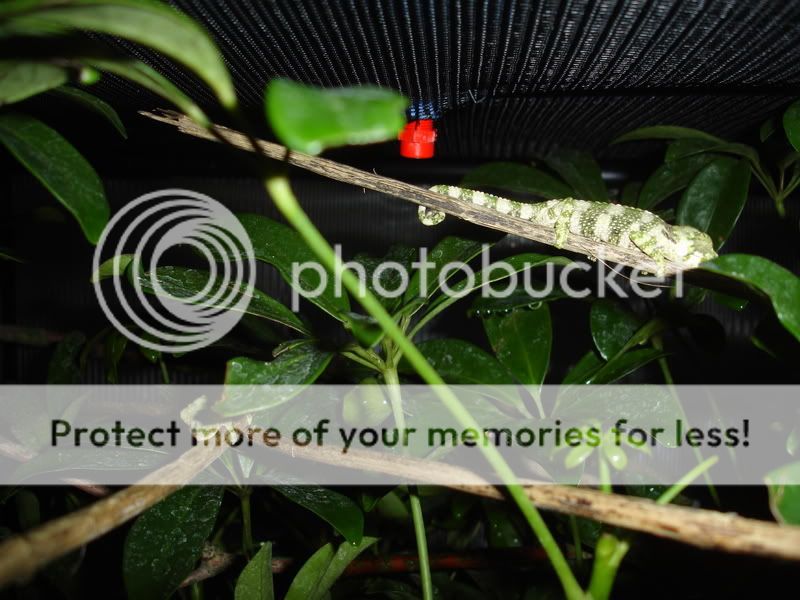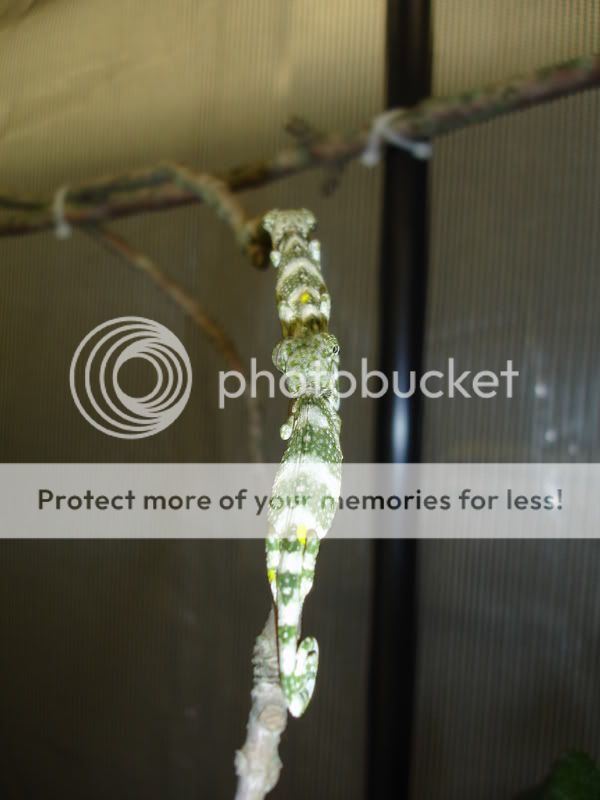studiocham
New Member
Thanks to FL Chams, I have six new CH from 3 bloodlines. They have been raised with their own siblings until today, when they were moved to one large communal cage. On arrival here, they all were marked with non-toxic color dots to identify their origin clutches. While the paint dried, I provided Hydei, but no takers. They were busy settling ranks, as observed in the 2005 CB hatchlings. They showed lateral compression, swaying, raised pinched forefoot, the whole routine, ending as soon as the targeted audience showed green and broke eye contact. Each had never seen the other clutches before, so some displays were in order. It wasn't the paint color signalling to them; no two of the same displayed to each other. I gave them a hand-misting, all had a drink, and then got the feeding responses. After eating, exploring was more interesting than shouting at each other.
After lights out, I checked on them again. The red dots (my younger female's) and blues (Megana's) were scattered around the cage (a 260-g Reptarium horizontal). These two were the closest:

The two yellows had found each other and were roosting together on the same twig. It's all too new to roost with strangers.

Later, another roosting check and a light hand-misting: the red and blue pictured above had moved to share one branch, about 4" apart. It will be interesting to see if all three clutches' babies will eventually roost together. No question, juvenile melleri recognize the distinction between strangers and sibs. I hope more keepers have the opportunity to repeat the experiment.
If you're wondering why I mist even after they go to roost, babies will drink at every chance and need hydration even more than the adult melleri. I'll probably do another misting in the middle of the night for a couple weeks. This is in addition to the auto mist system.
After lights out, I checked on them again. The red dots (my younger female's) and blues (Megana's) were scattered around the cage (a 260-g Reptarium horizontal). These two were the closest:

The two yellows had found each other and were roosting together on the same twig. It's all too new to roost with strangers.

Later, another roosting check and a light hand-misting: the red and blue pictured above had moved to share one branch, about 4" apart. It will be interesting to see if all three clutches' babies will eventually roost together. No question, juvenile melleri recognize the distinction between strangers and sibs. I hope more keepers have the opportunity to repeat the experiment.
If you're wondering why I mist even after they go to roost, babies will drink at every chance and need hydration even more than the adult melleri. I'll probably do another misting in the middle of the night for a couple weeks. This is in addition to the auto mist system.
